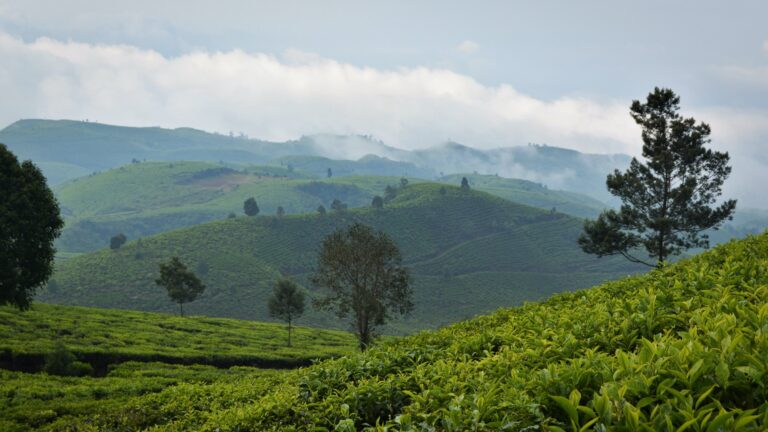Credit: Unsplash/CC0 Public Domain
According to a study published in the Proceedings of the National Academy of Sciences, Vast swathes of land have been left abandoned after rainforests were cleared in Indonesia, a country known for its biodiverse rainforests and carbon-rich peatlands.
Since 1990, the country has lost 25% of its old-growth forest, and while more than a quarter (7.8 million hectares) of Indonesia’s deforested land has been converted to oil palm plantations since 2020, an even larger area (8.8 million hectares, roughly the size of Maine) remains vacant.
The study, which focused on deforestation trends in Indonesia from 1991 to 2020, also found that more than half of Indonesia’s deforested land was left idle for at least a year after clearing, and 44% remained idle for at least five years.
“Old-growth rainforests are an incredibly valuable resource, both locally and globally,” said Diana Parker, a postdoctoral researcher in the Department of Geographic Sciences at the University of Maryland and lead author of the study. “The fact that such a large area of old-growth forest was cleared and left empty is surprising.”
To understand why so much wasteland was created, researchers first had to determine how the forests were cleared. During the 2015 El Niño event, forest and land fires in Indonesia created a major public health crisis, both in Indonesia and in neighboring countries. Some researchers have speculated that forest fires such as those that occurred in 2015 are largely responsible for the disappearance of large areas of non-forested land.
However, this study found that fires resulting in loss of forest cover accounted for less than half of all clearing of vacant land; 54% was cleared mechanically, either by hand clearing or using heavy machinery.
“Wildfires can be intentional or accidental,” Parker said. “Mechanical clearing, on the other hand, is not only intentional, it can also be time-consuming and costly. Once we realized that more than half of the unexploited areas were not the result of fires, a new question arose: Why do people go to such great lengths to clear forests and leave the land empty?”
To answer this question, researchers involved in the study “Land in Limbo: Nearly a Third of Indonesia’s Cleared Old-Growth Forests Left Unexploited” used satellite imagery to examine the history of deforested areas, before and after clearing.
They found that most forests are degraded, for example by selective logging, before being cleared, suggesting that demand for timber is not the main driver of the creation of undeveloped land. Case studies in regions with large areas of undeveloped land have also shown that clearing increases, rather than decreases, land prices, further suggesting that timber is not the main driver.
After forest clearance, the researchers found that some unoccupied areas were eventually converted to productive uses. Of the mechanically cleared unoccupied areas, about a quarter were converted to productive land use within five years of the deforestation event, and half were in productive use by 2020. In these cases, oil palm plantations were by far the most common outcome.
“About 80 percent of the mechanically cleared wasteland converted to productive use has become oil palm plantations,” Parker said. “This means that the real environmental impact of palm oil is likely much greater than the area planted immediately after the forest was cleared, and is potentially greater than the total deforested area currently planted with oil palm.”
This lagged conversion dynamic appears to be unique to palm oil. The researchers found that two-thirds of all oil palm plantations established in deforested areas were planted after a lag of at least one year. Other major drivers of deforestation, such as smallholder land use or tree plantations, were almost always established immediately after clearing.
“Satellite imagery doesn’t tell us exactly how wasteland creation and the palm oil industry are linked, but land use trends suggest a relationship,” Parker said. “In some cases, companies or individuals may intend to sell cleared land but wait for land prices to rise. Or they may plan to harvest it later and keep it as part of their land bank.”
“In other cases, seedlings may have died before they were detected on satellite imagery, or conflicts with communities or other concessionaires may have delayed planting,” Parker said.
The study results include encouraging news for the country’s remaining forests: From 2017 to 2020, Indonesia experienced the lowest deforestation rates observed during the entire study period.
“Indonesia is one of the few countries with tropical forests that has successfully slowed deforestation,” said Matthew Hansen, a professor at the University of Maryland and co-author of the study. “Given the amount of land currently unused, Indonesia could stop clearing forests altogether and still increase palm oil production.”
Governments and private companies are increasingly adopting policies to eliminate deforestation from commodity supply chains. Under the EU’s Deforestation and Reduction Strategy Paper (EUDR), due to be implemented later this year, certain products, including palm oil, cannot be imported into the EU if they were produced on land deforested after 2020.
“This study shows that Indonesia has large areas of land deforested before 2020 that are underutilized,” Hansen said. “Using these areas for commodity expansion could allow Indonesia to comply with the EUDR while protecting its remaining natural forests.”
More information:
Parker, Diana, Land in Limbo: Nearly a third of Indonesia’s cleared old-growth forests are left to rot, Proceedings of the National Academy of Sciences (2024). DOI: 10.1073/pnas.2318029121. doi.org/10.1073/pnas.2318029121
Provided by the University of Maryland
Quote:Study finds one-third of Indonesia’s deforested land left idle (2024, July 1) retrieved July 1, 2024 from https://phys.org/news/2024-07-indonesia-deforested-left-idle.html
This document is subject to copyright. Apart from any fair dealing for the purpose of private study or research, no part may be reproduced without written permission. The content is provided for informational purposes only.


